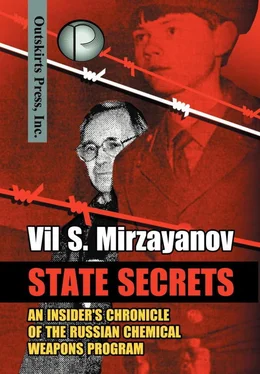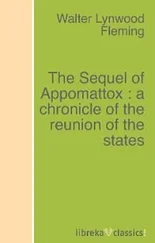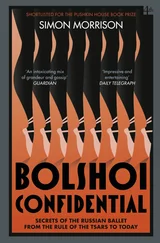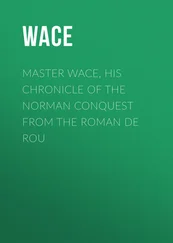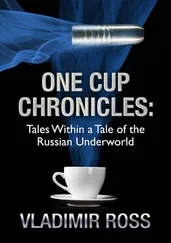The set-up of this production facility took more than a year. During that time, we lived in apartments in the factory hotel, under highly constrained conditions. Aside from work, there was practically no entertainment other than card games, accompanied by drinking vodka and other strong liquor.
One of the deputies of Varshavski in those days was Yury I. Baranov, who is currently a deputy director of GOSNIIOKHT. He was deeply anti-Semitic, but he was also servile to the point of stupidity. All the same, he did everything he possibly could, in order to dispatch his boss to retirement with a pension, right after the start-up of the Novocheboksary complex.
Varshavski was excluded from membership to the Science Council at GOSNIIOKhT, since Leonid A. Sokolov, the Deputy Director for the Security Regime at that time, had decided that in his opinion, the application which Varshavski had submitted for permission to visit his daughter in Israel, amounted to “insolence.” Up until this time, Varshavski had become rather a senior man, and naturally he wished to see his beloved daughter. No judgment was passed on this matter. Then he had a heart attack, but since he was in deep disgrace, they did not find a place for him at the privileged hospital where he and other leading scientists at GOSNIIOKhT usually went. Instead, they placed him in an overcrowded regional hospital, where he had to lie in the cold corridor. He caught pneumonia there and died several days later.
This is how the Soviet system repaid one of its own principal researchers on chemical weapons, a man who showed just a hint of divergence from the iron rules of totalitarianism.
I am thankful to him for his readiness to help young scientists, including myself. When I had difficulty and couldn’t even get the theme of my doctoral dissertation approved, although the practical work had already been completed, Varshavski organized a seminar in his department with my report. The seminar under his chairmanship issued a very favorable and complimentary decision about my work, which undoubtedly played a very positive role in my scientific career later on.
The success of the start-up in 1973 of the Novocheboksary Factory for producing Substance 33, brought golden days of triumph to GOSNIIOKhT. The Institute’s Director, Ivan Martynov, became a “Hero of Socialist Labor” and Konstantin Guskov received the Lenin Prize. The true author of the technology, Yuri Privezentsev, could have obtained this same prize after a long ordeal, but Martynov “persuaded” him to be satisfied with a medal of Lenin. When the Director asked Yuri which award he would prefer, “the highest award of the Motherland – the Order of Lenin, or simply the Lenin Prize,” Yuri answered modestly, “I prefer to have both.”
He did not pay such a high price for his audacity in the end though. Yuri Privezentsev was excluded from the list of candidates to be recipients. They found some people, who, under Martynov’s leadership, were able to receive the author’s certificate (the Soviet patent) for this technology, which was already operating in the Novocheboksary Factory. All this was done openly and with cynicism, in the hope that Privezentsev, would think about the Regime of Secrecy, would not be able to complain to anyone. But thanks to the success of the start-up with his technology, his work became well known to Leonid A. Kostandov, who was the Minister of Chemical Industry of that time. Yuri was granted an audience with the minister, and this meeting decided the fate of the award in favor of the real author of the technology.
It’s well known that when the list of candidates for receiving the Lenin Prize was brought to the attention of Mstislav Keldish, who was then the President of the U.S.S.R. Academy of Sciences, he was very surprised not to see any academicians on the list. At that point he said that he did not believe that GOSNIIOKhT could resolve this problem.
Word came back quickly, that the academician Mikhael I. Kabachnik, who was from the Institute of Elemental Organic Compounds of the Academy of Sciences, should be included in the list. They were not embarrassed by the fact that he had no relationship to the problem at hand, other than the fact that he presented himself as a member of the Science Council at GOSNIIOKhT and tried to synthesize VX gas without any success. [17] In 1974 the following people received the Lenin Prize for organizing the production of Substance 33: A.V. Fokin, K.A. Guskov, M.I. Kabachnik, Ju.V. Privezentsev, V.M. Romanov, V.F. Rostunov, E.M. Zhuravski. Like Kabachnik and Fokin, Zhuravski didn’t have any relationship to this work except that he had been the chief of a department of UNKhV.
The Directorate of GOSNIIOKhT
Clearly GOSNIIOKhT reached its pinnacle under the leadership of Ivan Vasilievich Martynov, a retired colonel and a graduate of the Military Academy of Chemical Defense.
Martynov managed to avoid military service during the war in a very original way. In his army unit, he was fortunate enough to fall under a horse and received a disability certificate that kept him from the battlefront. Regardless of such a military service record, his subordinates, with the silent consent of their master, always introduced him as an honored veteran of WWII.
The “horse injury” didn’t prevent Martynov from entering the Military Academy of Chemical Defense, and after graduation, he served at the UNKhV, [18] The Administration of Chief of the Chemical Troops.
and was monitoring GOSNIIOKhT. This service determined the future career of this vain “warrior”.
GOSNIIOKhT was one of the main contractors for UNKhV, which formulated the technical tasks and the terms for conducting scientific research. A lot of the funding for GOSNIIOKhT was based accordingly, and UNKhV even had a special department and a Science Council composed of military scientists, chaired by the Deputy Director of Science for the Chemical Troops. This department was responsible for implementing the terms for conducting scientific research.
Apparently, Martynov’s work as a supervisor was rather highly esteemed by this department, and his career was very successful. He successfully defended his master’s thesis, supported by professors Leonid Soborovski and Sergey Ivin. Soon after that, he retired and came to GOSNIIOKhT as the Deputy Director for Science.
In 1961 after he had held this post for some time, he became the institute’s director instead of Dmitri Kutepov, who then became the Deputy Minister for Chemical Industry of the U.S.S.R. The positions of the institute’s Director, several of his deputies, the Director of Scientific Research and his deputies were given only to a very special group of people. This group, which was known as the “nomenklatura,” was the top of the elite ruling class or bureaucrats in the Soviet Union. These people were approved by the Central Committee of the CPSU, and enjoyed the most lavish privileges, including access to special stores, hospitals, resorts and schools for their children. GOSNIIOKhT itself was closely monitored by the Military-Industrial Commission (VPK), which was headed by one of the secretaries of the Central Committee of the CPSU. [19] It is necessary to point out that the role of the VPK has been exaggerated in some literature sources. Its role overall was limited to distribution of funds, especially currency etc. Some people named it the fifth wheel of the car.
As the new director, Martynov was energetic, pushy, and he possessed all the qualities necessary for an autocratic and bureaucratic management style. He did not tolerate any independence on the part of his subordinates. Shortly, he managed to change the fundamental direction of GOSNIIOKhT, from an institute with diversified operations into one specializing almost exclusively in the development and testing of new types of chemical weapons.
Читать дальше
